GrabCAD
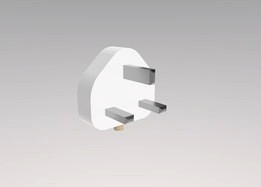
BS 1363 Plug
by GrabCAD
Last crawled date: 1 year, 10 months ago
BS 1363 is a British Standard which specifies the common single-phase AC power plugs and sockets that are used in the United Kingdom. Distinctive characteristics of the system are shutters on the line and neutral socket holes, and a fuse in the plug. It has been adopted in many former British overseas territories. BS 1363 was introduced in 1947 as one of the new standards for electrical wiring in the United Kingdom used for post-war reconstruction. This plug corresponds to Type G in the IEC table. BS 1363 replaced the BS 546 plug and socket (which are still found in old installations or in special applications such as remotely switched lighting). Other exceptions to the use of BS 1363 plugs and sockets include equipment requiring more than 13 A, low-power portable equipment (such as shavers and toothbrushes) and mains-operated clocks.
UK plugs are no doubt among the safest in the world, but also among the most hulking and cumbersome. That’s why people often make fun of them saying that a British plug is mostly bigger than the appliance it is connected to… Moreover, the bottom-heavy design of the plug makes it a perfect caltrop.
BS 1363-1 specifies the dimensions of plug pins and their disposition with respect to each other in precise, absolute terms. The line and neutral pins have a rectangular cross section 6.4 mm by 4.0 mm, 17.7 mm long and with centres 22.2 mm apart. The protective-earth pin is a rectangular cross section 8.0 mm by 4.0 mm, 22.3 mm long and with a centre line 22.2 mm from the line/neutral pin centre line. The dimensions were originally specified in decimal inches with asymmetric tolerances and redefined as minimum and maximum metric dimensions in BS 1363:1984.
Dimensions are chosen to provide safe clearance to live parts. The distance from any part of the line and neutral pins to the periphery of the plug base must be not less than 9.5 mm. This ensures that nothing can be inserted alongside a pin when the plug is in use, and helps keep fingers away from the pins. The longer earth pin ensures that the earth path is connected before the live pins, and remains connected after the live pins are removed. The earth pin is too large to be inserted into the line or neutral sockets by mistake.
UK plugs are no doubt among the safest in the world, but also among the most hulking and cumbersome. That’s why people often make fun of them saying that a British plug is mostly bigger than the appliance it is connected to… Moreover, the bottom-heavy design of the plug makes it a perfect caltrop.
BS 1363-1 specifies the dimensions of plug pins and their disposition with respect to each other in precise, absolute terms. The line and neutral pins have a rectangular cross section 6.4 mm by 4.0 mm, 17.7 mm long and with centres 22.2 mm apart. The protective-earth pin is a rectangular cross section 8.0 mm by 4.0 mm, 22.3 mm long and with a centre line 22.2 mm from the line/neutral pin centre line. The dimensions were originally specified in decimal inches with asymmetric tolerances and redefined as minimum and maximum metric dimensions in BS 1363:1984.
Dimensions are chosen to provide safe clearance to live parts. The distance from any part of the line and neutral pins to the periphery of the plug base must be not less than 9.5 mm. This ensures that nothing can be inserted alongside a pin when the plug is in use, and helps keep fingers away from the pins. The longer earth pin ensures that the earth path is connected before the live pins, and remains connected after the live pins are removed. The earth pin is too large to be inserted into the line or neutral sockets by mistake.
Similar models
3d_export
$20
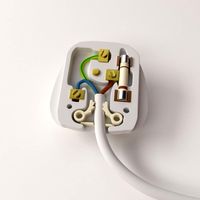
Plug Internal 3D Model
...e outlet installation student
plug internal 3d model download .c4d .max .obj .fbx .ma .lwo .3ds .3dm .stl firdz3d 105445 3dexport
grabcad
free

Shuko adapter to BS 1363
...shuko adapter to bs 1363
grabcad
this is an adapter to convert a shuko plug to a bs 1363 standard plug
free3d
free

BS 1363 Male Plug v1
...bs 1363 male plug v1
free3d
bs 1363 male plug v1 printable, low poly model.
free3d
free

BS 1363 Female Wall Socket v4
...bs 1363 female wall socket v4
free3d
bs 1363 female wall socket v4 printable, low poly model.
thingiverse
free

Hack it! Key by Zouhairy
...elow link lists down all types of plugs and countries using em.
link: http://www.worldstandards.eu/electricity/plugs-and-sockets/
grabcad
free

Plug - 3 pin, 250V 50Hz 6A
...s type d plug has three round pins in a triangular pattern. the earth pin is slightly larger than the live and neutral terminals.
grabcad
free

Two Pin Socket
...l”. when connected to an electric circuit, the current flows from the live pins through the copper conductor and into the device.
3dwarehouse
free

British 3 Pin Power Socket Plug DOUBLE SOCKET (2 GANG)
...et (2 gang)
3dwarehouse
british 3 pin power socket plug with switch and screws #british #pin #plug #power #socket #switch #three
3dwarehouse
free

British 3 Pin Power Socket Plug SINGLE SOCKET
...british 3 pin power socket plug single socket
3dwarehouse
british 3 pin power socket plug single socket
thingiverse
free

UK BS1363 Electrical Socket Shutter Prong & Holder by Simonwlchan
...t other side of the plug, voila!
design includes a holder that you can paste to the side of the socket with double-sided tape.
1363
3d_export
$20

Plug Internal 3D Model
...3dexport plug socket pin uk united kingdom internal bs 1363 fuse ac power electric electrical home outlet installation student...
3d_export
$50

3D Home 1363 3D Model
...chair furniture texture table lamp apartment rug carpet restaurant hotel sitting
3d home 1363 3d model richard3015 45669 3dexport
3d_export
$21
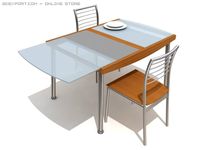
Dining room furniture 3D Model
...room table chair dining room furniture 3d model sh_a 1363 ...
3d_export
$5

potions
...+ roughness + metallic, normal)<br>verts: 1062<br>edges: 2112<br>faces: 1056<br>tris: 2112<br>uvs: 1363 ...
thingiverse
free

6-axis RoboArm Sirius by Diego_RSDesign_
...pupils of the 11th form of the school no. 1363 of the city of moscow within the framework of...
thingiverse
free

CNC Laser engraver 3DBOOM1363 by Diego_RSDesign_
...cs)
5x8 coupling (2 pieces)
arduino uno
cnc shield
nema17-41 motors (2 pcs)
a4988 drivers (3pc)
2w 445nm laser module
psu 12v 60w
thingiverse
free

Hack it! Key by Zouhairy
...are traveling to any of the countries using bs 1363 type-g 3-pin plugs (220 - 240 v) and all...
thingiverse
free

Wanhao Duplicator 6 blower fan upgrade for extruder and part cooling by _ZincBoy_
...used are the delta bfb0412hha and are available from digikey:http://www.digikey.com/product-detail/en/delta-electronics/bfb0412hha-a/603-1363nd/ the fans are secured to the printed parts using...
free3d
free

BS 1363 Male Plug v1
...bs 1363 male plug v1
free3d
bs 1363 male plug v1 printable, low poly model.
free3d
free

BS 1363 Female Wall Socket v4
...bs 1363 female wall socket v4
free3d
bs 1363 female wall socket v4 printable, low poly model.
Bs
3ddd
$1

Halley
...halley 3ddd halley , трюмо стол и зеркало halleyhttp://robertastor1.ru/bsseecatalog/?id=18411 ...
3ddd
$1
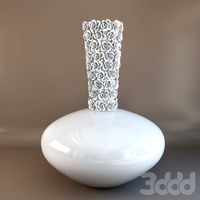
BS Collection_vase
...bs collection_vase
3ddd
ваза , bs collection
ваза
фабрика bs collection
высота 920мм
3ddd
$1

Murray Feiss
...murray feiss 3ddd murray feiss murray feiss f2629/8+4af/bs высота: 26,63 " общая длина: 70,13 " ширина /...
3ddd
$1
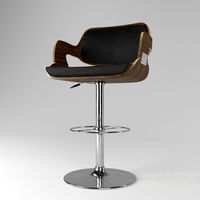
Fiore Bar Stool
...color : walnut / brown product id : bs-jy-fr wal+bnhttps://www.lumisource.com/details/fiore-bar-stool&nbs; ...
3ddd
$1

Барный Стул BS-0007
...барный стул bs-0007
3ddd
барный
bs-0007
3ddd
$1

Gaggenau BM274
...bm274 , gaggenau , духовой шкаф духовой шкаф gaggenau bs 275 полигоны - 15262 вершины -...
3ddd
$1

bacci lamp JA/LA.013
...bacci lamp ja/la.013 3ddd bacci бренд bacci stile, коллекция bs highlights,...
3ddd
free

Барный стул Signal BS-90
... стул с мягкой обивкой.
материал: дерево.
цвет: венге.
в архиве имеются два стула с вариантами обивки, представленными на превью.
3ddd
free

Зеркала Standing Silver 9995.CHN и ROMANCE
...standing silver 9995.chn и romance 3ddd напольное , romance http://robertastor1.ru/bsseecatalog/?id=14715 http://kiev.all.biz/zerkalo-napolnoe-romance-g1985696#.u-9wavl_usp ...
3ddd
free

BS-white
...bs-white
3ddd
беседка
good luck :)
Plug
3ddd
$1

Mr Suicide Bath Plug
...mr suicide bath plug
3ddd
mrsuicide , затычка
mr suicide bath plug
3d_ocean
$3
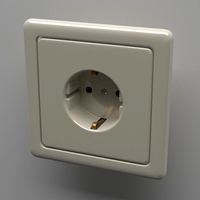
Schuko Socket
...schuko socket 3docean electricity energy outlet plug connector power power point safety socket schuko socket wall...
3d_ocean
$19

Kitchen 4
...beautiful and simple kitchen. made without the use of plugins. all textures are...
3d_ocean
$3
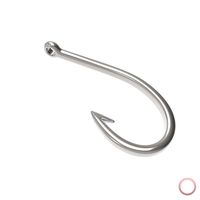
Fishing Hook
...fish fisher fishing hook lake line mouth ocean outdoor plug river saltwater sea sport water worm add more detail...
3ddd
$1

Artek A101 Pendant Lamp
...1952 steel, painted white or black.polished brass ring.light fixture plug white or blackplastic cable, 250 cm.11w, e27 (compact fluorescent)60w,...
archive3d
free

Hat 3D Model
...hat 3d model archive3d hat stovepipe hat tall hat plughat hat n281213 - 3d model (*.gsm+*.3ds+*.max) for interior 3d...
archive3d
free

Socket 3D Model
...socket 3d model archive3d socket plug socket wall outlet socket triple - 3d model (*.gsm+*.3ds)...
archive3d
free

Socket 3D Model
...socket 3d model archive3d socket plug socket wall outlet socket twin - 3d model (*.gsm+*.3ds)...
3ddd
$1
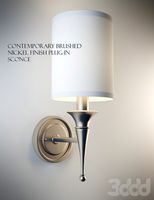
Finish Plug-in Sconce
...finish plug-in sconce
3ddd
finish plug-in sconce
finish plug-in sconce
3d_ocean
$5
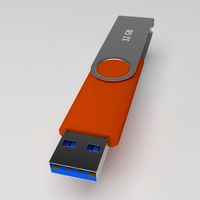
USB Stick
...usb stick 3docean 32gb computer memory plug plugin protection usb usb stick an usb stick with...
